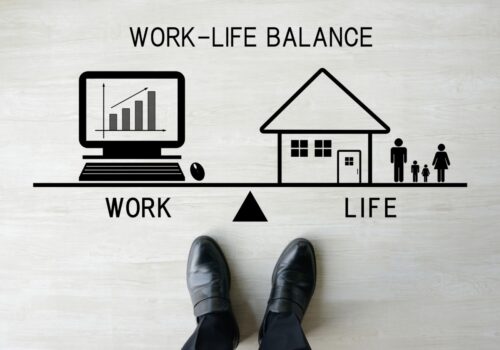Who can be more critical of you than yourself? This is why a self-assessment is the perfect tool for personal and professional growth. Self-evaluation helps you introspect and assess your accomplishments, performance, goals, strengths, and weaknesses. It provides you with a tool for career growth as well as an opportunity for self-improvement. Whether you’re a student, an employee, a manager, or just someone striving for excellence, the ability to assess yourself objectively and constructively is a skill that can set you on the path to success. According to studies, a self-assessment helps university students with job search clarity and personality development. In this article, we will show you how to write a self-assessment focusing on insightful and meaningful elements of the entire process.
Why the Need for a Self-Assessment?
A self-assessment is a tool that helps you keep track of your professional growth, accomplishments, and skill development during your tenure with a company. If you are a university student, it is an assessment of your academic development, your skills acquired, and a perception of yourself as a prospective employee who can be an asset to an organization. Self-assessments can provide you with a method to consider what abilities and habits you have developed and what still needs work. It is also a way of gaining effective feedback from your manager and fellow employees, verifying the credibility of your information.
Self-assessments are valuable in tracking accomplishments and reminding seniors who may have missed them in their evaluation of you. It is also helpful when an organization begins appraisals for promotions, raises in pay, and recognition. There are several more purposes to a self-assessment. Some of these are:
- Personal Growth
- Professional Development
- Academic Progress
- Goal Setting
- New career opportunities
- Leadership and management skills
How to Write a Self-Assessment?
Writing a self-assessment takes time to plan. You need to adhere to a certain structure, but before that you need to think carefully and chalk out how you reflect an honest evaluation of yourself to show others your character and potential. Here’s how to go about it.
Gather Data and Evidence of Your Performance and Achievements
Before you begin to write your self-assessment, data, and evidence of your performance is the most crucial element, without which your assessment won’t carry any weight. Collecting data, documents, and evidence builds a strong foundation for your self-assessment. Here’s how you need to gather information.
- Documentation: Review relevant documents, reports, emails, and feedback. This could include your resume, job descriptions, past assessments, and any relevant metrics.
- Feedback: Seek input from colleagues, peers, supervisors, or mentors. Constructive feedback provides valuable insights.
- Personal Diary: Maintain a diary of your experiences, accomplishments, project contributions, new skills acquired, and areas requiring improvement.
- Acknowledgment: Get written acknowledgments, recommendations, and certificates of achievement; all of these are proof of your evaluation
Reflect on Your Goals and Objectives
Your self-assessment should be perfectly aligned with your goals and objectives, reflecting a sense of purpose and being relevant. It should be a measure of your progress and focused on areas that need attention by answering these questions:
- What are my achievements?
- What are my short-term goals?
- What are my long-term goals?
- How has my performance contributed to these goals?
- What skills do I need to improve?
- What skills do I need to develop for further growth?
- How is my performance?
- What are my personal and social skills?
Use the S.M.A.R.T. Goal Coaching Model
When setting goals based on your self-assessment, the S.M.A.R.T. framework is a valuable tool. S.M.A.R.T. stands for Specific, Measurable, Achievable, Relevant, and Time-bound and relates to the characteristics of the model.
- Specific: Clearly define your goals
- Measurable: Your progress, which can be measured and tracked
- Achievable: Set realistic goals within your capacity aligned with skillsets
- Relevant: Align with your overall objectives and areas needing improvement.
- Time-bound: Have a clear timeframe for completion.
Mention Your Strengths and Weaknesses
In your assessment, mention your strengths and how they contributed to your achievements. Be descriptive and specific, outlining all the work you have been doing in your role as an employee. For example, if you were instrumental in launching a new project or contributed valuable insight into improving one, these should be highlighted. The same goes for your efforts in generating more profits for your organization. To balance your self-assessment for honesty and credibility, list your weaknesses and describe what remedies you plan to adopt to improve them.
Showcase Your Growth Mindset
A critical element of a self-assessment is demonstrating your willingness or growth mindset as an employee. Doing so will give you ample opportunities to be a more active member of a team, management, and organization. In terms of your career, such opportunities are incredibly beneficial for your growth and development. You need to show your employer how you are flexible and open to taking on challenges in your job.
Self-Assessment Structure
A well-structured self-assessment makes it look professional and easier to understand. Follow the guidelines below as an example of a well-thought-out self-assessment format.
- Introduction: State your purpose and context of the self-assessment in a paragraph
- Strengths: Discuss your strengths, achievements, and positive contributions with evidence to support your claims.
- Areas Needing Improvement: Address areas where you can improve using specific examples to illustrate your points.
- Goals: Outline your goals and objectives for the future.
- Action Plan: Describe how you plan to achieve your goals, including resources or support you might need.
- Appendix: Include any supporting documents or evidence, such as charts, graphs, or additional feedback.
- Use Clear and Concise Language: Effective communication is crucial to any self-assessment. Use clear, concise, and specific language to convey your thoughts without the use of jargon and vague words.
- Feedback: Leave space for feedback from colleagues and seniors.
- Conclusion: Summarize your self-assessment, emphasizing your commitment to self-improvement and growth.
Remember, writing a self-assessment is a valuable skill that can help you achieve personal and professional growth. The guidelines mentioned in this article will help you create a meaningful and actionable self-assessment that demonstrates your professionalism, mindset, character, and willingness for self-growth, all the hallmarks of a fantastic employee. Let us remember a self-assessment also helps you become a better version of yourself.
















